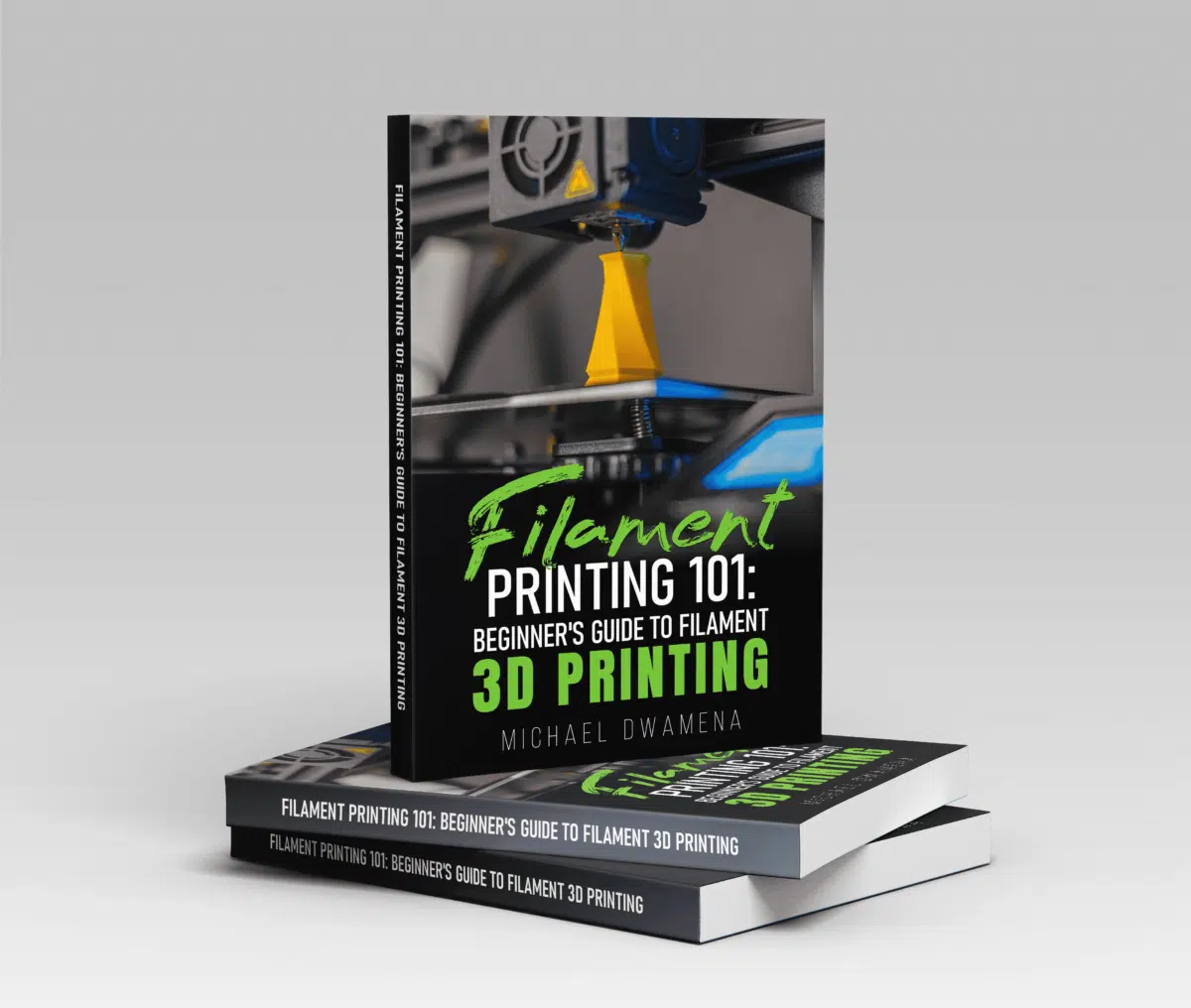If you’re using a resin 3D printer, you’ll eventually have to clean the vat and the FEP film. Failing to clean the vat can cause clouding and printing problems, sometimes in as little as two weeks.
In addition, it can cause permanent damage to your FEP film if hardened resin moves around and scratches the film. Therefore, it’s best practice to clean your vat when you notice buildup or clouding in the resin or when you want to change resin.
Otherwise, you should almost never touch the vat.
How do you clean FEP film? You start by draining the resin and filtering it. From there, you can dab up any remaining wet resin. Then, remove any hardened resin by pressing from underneath the FEP film. Finally, clean the film with isopropyl alcohol.
FEP Film Pre-Cleaning Preparation
Cleaning a printer vat and FEP film is a relatively simple process.
In most cases, you can finish the full job in under half an hour. However, it’s important to take safety precautions. For example, even if you’re using bio-resin, UV-curing resin is still toxic and can cause chemical burns on the hands.
You’ll need:
- Non-latex safety gloves, probably more than one pair
- Funnel
- Mesh or paper filter that fits in the funnel
- Coffee filters (for filtering cleaning fluid)
- Paper towels
- Disposable microfiber cloths
- Plastic scraper
- Ziplock bags (clear)
- Containers to hold liquid resin (usually the original containers work the best)
Depending on what kind of resin you have, you may also want protective eyewear and a respirator mask. If you need these to print with your resin, you need them to clean the resin tank.
In addition, it’s important that you work in a well-ventilated space. You’ll also want splash protection, so ensure you wear long sleeves to prevent burns.
7 Steps To Clean FEP Film
Cleaning FEP film is a relatively easy process.
- Our new Filament Printing 101 Course is just for you! Lean how to create perfect professional prints without all the hassle.
- Don't let common mistakes hold you back, click the link to learn more and get ahead now!
However, you’ll have to exercise caution to prevent spilling resin or damaging the FEP film.
1. Remove the Vat
Set up a container to hold the resin from your printer. Stabilize it by placing it between two weights or in a light vice. This will prevent you from accidentally tipping it over.
Then, put a funnel in the top with a filter in the funnel.
Check your printer and see where the vat attaches. Most printers use two screws or wing screws on either side of the vat.
You can undo these with your hands in most cases. Set the screws aside and make sure they won’t roll or get lost.
Then, carefully lift the vat up and out of the printer, being careful not to scratch the bottom. You’ll also want to move smoothly, so you don’t spill or splash the resin.
2. Empty the Resin
Slowly pour the resin into the filter you set up. Make sure that you don’t pour too fast and overflow the filter.
Filtering resin allows you to use it again without damaging the FEP film. Here, you filter out crystals, bits of hardened resin, and any contaminants that might be in the resin.
Because these contaminants are the primary cause of damage to the FEP film, filtering resin will greatly improve the lifespan of your FEP film.
Everything that goes through the filter is likely usable. This won’t be the case if the resin is cloudy, in which case you should just throw it away.
3. Dispose of the Filter
Place your used filter into a Ziplock bag and put it in a sunny window or under a UV lamp. Don’t throw these into household trash until the resin is fully hardened.
If you’ve got resin on the funnel, you can wipe it down with paper towels and then leave it in the sun, inside a plastic bag. Any remaining resin should be easy to scratch off, especially if you have a silicone filter.
Put the paper towels in a zip lock bag and put them in the sun.
If you get resin on your gloves at any point, change them immediately.
4. Dab the Remaining Resin Out of the Vat
Fold some disposable microfiber towels together and create a thick bunch of them.
Then, blot or dab the bottom of the resin vat to remove any remaining resin. This can take some time to get all of the resin up.
Here, it’s important not to worry about getting up the hardened resin. You’re just removing the remaining liquid resin.
Scrubbing or scratching on top of the FEP film can damage it. So, use soft dabbing motions.
Here, it’s important not to use paper towels or soft tissue paper like Kleenex or toilet paper. Why? Paper towels are too rough and will scratch the FEP film.
That might not be enough to force you to throw it away immediately, but over a few times of cleaning, it will be. Toilet paper and Kleenex are too soft and will leave paper filament and dust behind, which could also damage your prints.
If you get resin on your gloves at any point, replace them.
5. Dislodge Any Hardened Resin
Once the FEP film is dry, remove any hardened resin stuck to the bottom.
Normally, you can achieve this by rubbing the FEP film from the bottom, with your gloves on. Use gentle motions and don’t push too hard on the film.
You can use a plastic scraper to dislodge anything stuck to the sides of the vat.
6. Clean the FEP Film
Submerge the vat in isopropyl and let it set for a few seconds, pull it out, and then keep repeating.
Then, pat or dab the FEP film dry using a microfiber cloth.
Then, check the FEP film. If it’s scratched or damaged in any way, now is a good time to replace it.
7. Replace and Refill the Vat
Carefully set the vat back into place on the printer and re-attach the screws. Level the vat. Refill it with your resin of choice.
Don’t mix fresh and old resin together. You may want to re-level the vat after filling it.
Why Is It Important To Clean FEP Film?
In most cases, you’ll have to clean the FEP and vat every 2+ weeks. However, you’ll also have to check and clean the resin and the film based on usage.
For example, if you print constantly, every 2 weeks is reasonable. If you rarely print, you could go for months in between cleaning the film.
Here, it’s important to keep in mind that cleaning the vat too often can result in more damage to the FEP.
Preventing Damage to the Film
If contaminate builds up on the film, the film will scratch.
For example, if hardened resin stays on the film, you can scratch the film by removing a print. The more hardened bits of resin there are in the resin, the more likely you are to damage the FEP film.
A dirty resin will also increase the speed at which your FEP film gets cloudy. Once it’s cloudy, it will block too much of the light, which means you’ll degrade the quality of your prints.
Therefore, regularly cleaning your FEP and the resin vat will increase the lifespan of the film.
Removing Hardened Resin
Every print will leave behind tiny bits of hardened resin and crystals. These can be problematic for your prints.
For example, if one is stuck partially in the print, you’ll have a lot more cleanup to do to get the print to usable condition.
Occasionally cleaning and filtering the resin vat will prevent this kind of issue.
3 FEP Film Maintenance Tips
Maintaining FEP film normally means leaving it alone.
However, it also means taking care not to scratch it, cleaning the vat when needed, and taking care of the resin in your printer.
1. Clean the Vat When Needed
If you’re changing resin, the resin is getting low, or there’s a large amount of buildup in the bottom of the vat, it may be a good idea to clean the vat and the FEP.
You should also clean the vat and the FEP when changing the resin or switching to a different type of resin. Otherwise, you can generally leave the vat and the FEP alone.
2. Always Filter the Resin
If you’re cleaning the FEP, make sure you take the time to filter the resin. Here, you can simply strain the resin through a paper or a steel mesh filter.
If you use paper, you’ll want to use a funnel to ensure the filter doesn’t collapse under the weight of the resin.
In addition, coffee filters are too fine and the resin is too thick to pass through them. Make sure you get a filter rated for resin.
3. Don’t Scrape the FEP
The easiest way to damage the FEP is by scraping old bits of resin or failed 3D prints off the film. Avoid scraping the film ever.
Instead, use your nail to slide under the edge of the print and pop it off the film. You’ll also always want to ensure you’re wearing gloves when you try this.
Conclusion
If you’re printing with resin, you’ll occasionally have to clean the vat and the FEP film. Here, the best option is to filter the resin when you drain it out of the vat. From there, you can immerse the film and vat in isopropyl alcohol (IPA) a few times to remove any stuck-on resin. Finally, pat the vat dry and put it back. The less you touch the film, the better.



